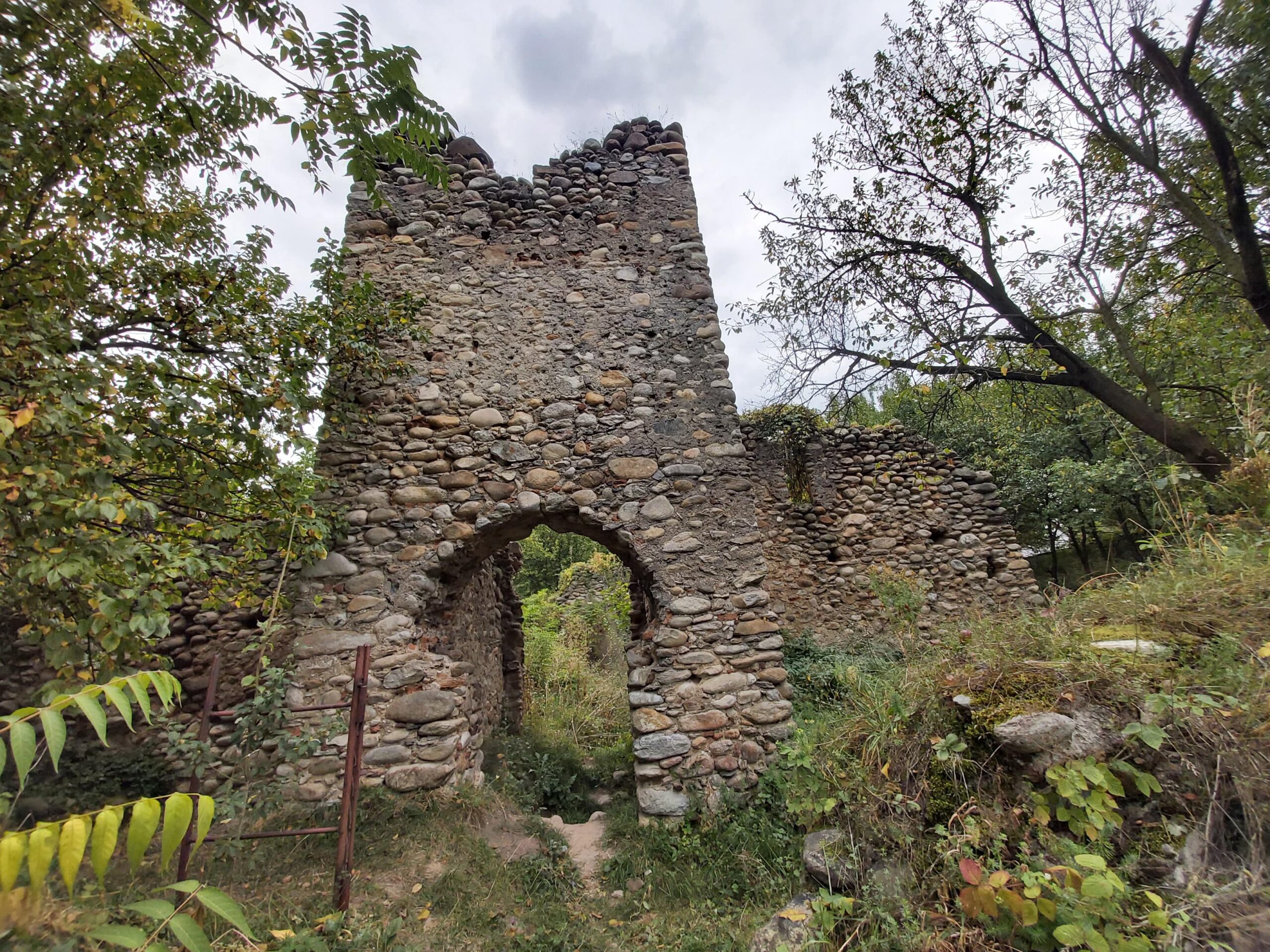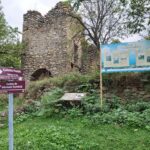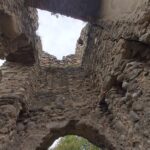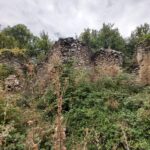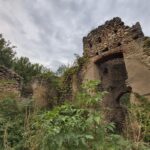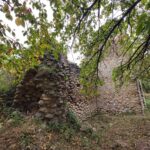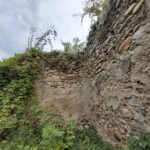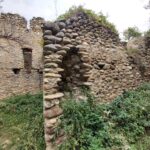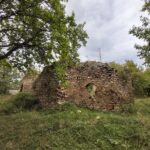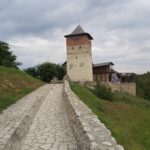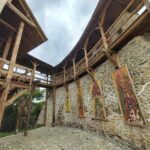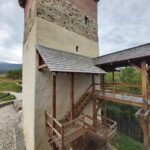Sălașu de Sus (Felsőszálláspatak, Ober-Bachdorf) – Hunedoara County
If you plan to enter the „gate” of the Retezat Mountains by visiting Mălăiești Fortress, don’t miss the chance to stop on your way to the recently renovated fortification and discover the ruins of the former feudal fortress in Sălașu de Sus. Although they belong to the same commune and were built in neighboring villages, the two fortresses have had completely opposite fates. The latter, located at the northern end of Sălașu de Sus, has been left abandoned… at least for now.
The feudal fortress in Sălașu de Sus, residence of the Cândreș (Kenderesi) boyars
The precise construction date of the Sălașu de Sus fortress is uncertain. Some sources indicate its existence as far back as the Árpád Dynasty. This is when Ladislaus IV the Cuman of Hungary issued a document attesting that the Sărăcin (Zerechen/Szerecsen) family owned the domain. More recent historical research suggests that after the disappearance of the Sărăcin family, the fortress came into the possession of the Cândreș (Kenderesi) family. Therefore, it became the symbol of the Sălaș boyarate between the 14th and 17th centuries. It is believed that the new noble court was built by integrating an older tower that formerly protected the entrance to the village.
Archaeological research has revealed that the courtyard of the noble court was rectangular. The 95×55 meter area was surrounded by walls over 1 meter thick. Towers once stood at the corners and along the sides of the enclosure; the feudal fortress included the stone house of the boyar as well as a small courtyard chapel, built in the 17th century and later converted into a Reformed chapel. The low gate did not allow horseback entry into the courtyard. Also, the narrow windows provided a crucial advantage to the archers overseeing the area. The spacious living quarters had handmade glass windows, with brick vaults above them.
Mălăiești Fortress has been restored. What about the fortress in Sălașu de Sus?
Interestingly, the entrance to the tower was designed below ground level, accessible via a wooden staircase that could be raised at night or in case of danger, with the traces of the breaks in the wall still visible today. When the last male Cândreș died, the domain passed to the Mara family. They only gained full ownership in the second half of the 17th century, after the end of a legal battle with the female heirs of the Cândreș family. After Izsák Mara, a supporter of the kuruc anti-Habsburg rebels, retreated to Sălașu de Sus, Austrian troops slaughtered the defenders of the fortress, which they then completely ravaged and set on fire.
While the court of the Cândreș boyars was never rebuilt, just a few kilometers away, in the village of Mălăiești, the fortress with a keep, built towards the end of the 14th century, flourished thanks to EU funds. Previously unnoticed, the medieval fortress is now a landmark on the tourist route to Nucșoara, having been fully rehabilitated and heavily promoted as a „gateway” to the Retezat Mountains. Although the renovation is contested by experts for not respecting historical accuracy, the fortress, transformed into a mini-museum, has nevertheless been put on the tourist map of Hunedoara County. When will the feudal fortress in Sălașu de Sus get its turn…?
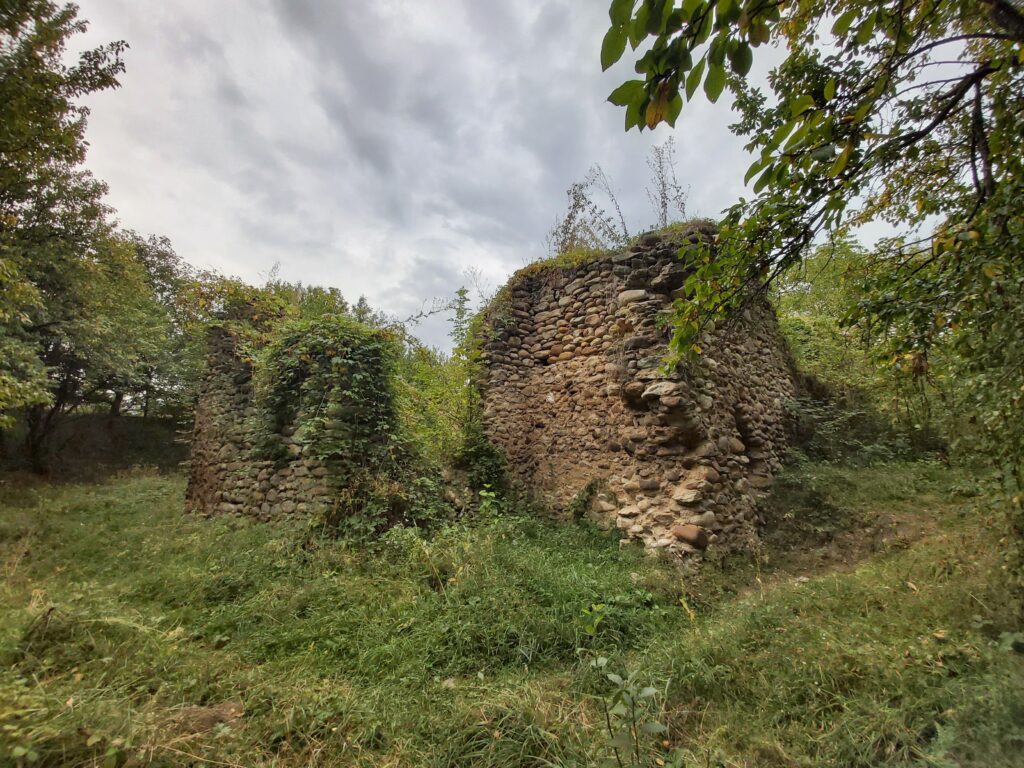
In the second half of the 19th century, the outer walls, four towers, the access bridge, and even the defensive ditches of the feudal fortress in Sălașu de Sus were still visible. Today, apart from the gate tower on the western side and a few 3-4 meter high walls, little remains of the former court of the Cândreș boyars. And what remains is overgrown with dense vegetation, hidden behind a few outdated information panels.

